#Province of Terni
Explore tagged Tumblr posts
Text

Giove, Umbria.
47 notes
·
View notes
Text


Marmore waterfall/Cascata delle Marmore, Terni, Province of Terni, Italy
Daniele Levis Pelusi
6 notes
·
View notes
Text



















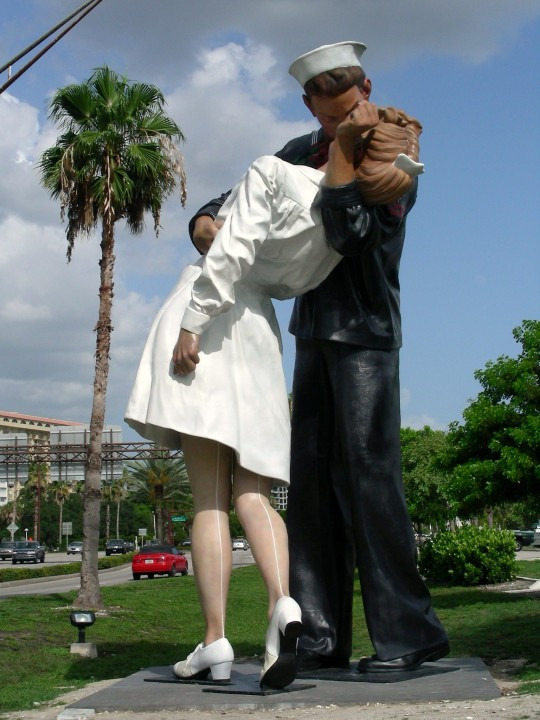










Valentine’s Day
Love and romance. Candy and flowers. Cards and gifts. Dinner and dancing.
Valentine’s Day comes along with a whole host of plans and accoutrements that are meant to all boil down to one thing: Love. And it all comes in the name of one man, St. Valentine, who was an interesting (and perhaps slightly misunderstood) character in history.
It’s time to learn about and celebrate Valentine’s Day!
History of Valentine’s Day
While some people believe that the history of this day is pretty clear, the reality is that the story behind St. Valentine’s Day is covered in a great deal of mystery. Tradition hails February 14 (and perhaps even the whole month of February!) as a time for love and romance, with both ancient Roman and Christian backgrounds.
But when the life of St. Valentine, the patron saint of this day, is considered, that’s when things tend to get a bit more murky. Some people don’t realize that the Catholic church actually has record of three of its own saints who went by the name of Valentine (or Valentinus) and all three died as martyrs.
Valentine’s Day Timeline
270 AD St. Valentine is martyred
Defying anti-marriage instructions given by Emperor Claudius II in order to build up the army, Valentine secretly supports and marries young couples which eventually leads to him being put to death. His death is said to have taken place on February 14.
496 AD First Valentine’s Day is recognized
Pope Gelasius decides to get rid of the Feast of Lupercalia, a pagan festival of love, and chooses to replace it with a celebration in honor of St. Valentine, who was martyred a couple hundred years prior.
1382 Chaucer’s Poem, Parlement of Foules, is written
This poem contains the first known literature reference connecting romantic love with Valentine’s Day. In the text of the poem, Chaucer writes of birds who would pair off with a mate, but some people refute the idea that it is connected to Valentine’s Day because February is too early and cold for birds to be mating.
1700 Americans begin exchanging Valentines
During this century, the inspiration for romance and love on Valentine’s Day turns into the specific gesture of exchanging notes, poems and love letters which may have been delivered by hand or by the US Postal Service.
2010 Valentine’s Day is released in theaters
This romantic comedy has a star-studded cast with big names like Julia Roberts, Bradley Cooper and even Kathy Bates, and tells the story of several different romances between couples that happen all in one day. However, at the box office, the film doesn’t really get the greatest reviews from critics.
Valentine Promotes Marriage
Perhaps the most commonly held tradition around St. Valentine is related to the year 270 AD when Claudius II was the emperor of Rome. Known as “Claudius the Cruel”, the emperor who wanted to build a strong army but was having trouble because of the attachment the men had to their wives and families. His solution? Just ban engagement and marriage, of course!
The story goes that Valentine, a priest in Rome, disagreed with the decree from Claudius and decided to go ahead and perform marriages anyway, allowing young lovers to marry each other in secret. When discovered, Claudius ordered the public beating and beheading of Valentine, which took place on February 14. The church later honored him by naming him as a saint.
This same Valentine is rumored to have become friends with the daughter of his jailer. He is said to have left her a note signed, “From Your Valentine”. This may explain the idea of asking someone “Will You Be My Valentine?”.
Less common are the other two saints also called Valentine, one who was a bishop in what is now Terni, Italy, and another who was martyred in a Roman province of Africa.
Feast of Lupercalia
It’s possible that even before Valentine, the priest, was martyred on February 14, the Feast of Lupercalia, a pagan feast of love, was celebrated around the same time. One tradition that went along with this festival is that the names of women were put into a box and drawn out by the men that they would be matched up with, letting chance (or fate!) take the lead.
By 496 AD, Pope Gelasius was tired of such pagan celebrations, so he declared that the Feast of Lupercalia would be canceled and, instead, St. Valentine’s Day would be celebrated on February 14. As time passed, this day became one where lovers would exchange poems, cards, notes and flowers, singing songs and performing other romantic gestures.
How to Celebrate Valentine’s Day
Celebrating Valentine’s Day comes with all sorts of inherited romantic traditions which can certainly be fun and bring lots of joy! But this is also a great way to get creative with showing people how much they are loved–even if it isn’t a romantic relationship.
Try out some of these ideas for celebrating Valentine’s Day:
Make a Card or Gift for Someone
Whether it’s a romantic partner or just a friend, Valentine’s Day is a great day to say “I Love You”. Hand made cards and gifts are especially welcome when it comes to showing someone how much they are cared for. January is a dark and quiet month anyway, so there’s plenty of time to prepare homemade gifts from a hobby like knitting a scarf, braiding a friendship bracelet, embroidering a towel, painting a picture or simply making a card.
Send Roses for Valentine’s Day
With delivery services abounding in almost every town, getting flowers delivered has never been easier! Choose to send red roses that stand for passion; yellow for friendship; pink for sweetness; peach for sincerity or gratefulness; white for purity or loyalty; ivory for perfection; and lavender for a crush (or love at first sight!).
Make Dinner Reservations
It’s likely that a last minute idea for going out to dinner will result in ordering takeout to eat at home, because restaurants are basically always full on Valentine’s Day. But, think ahead (sometimes months ahead, depending on the popularity of the restaurant) and make a reservation for two at a romantic place.
Enjoy a Story About Love
Head over to a local bookstore or library and browse the selection of novels or biographies that might feature stories about love. Or, it might even be interesting to read a biography about the guys named Valentine!
Those who don’t have as much time to read could put on their favorite drama or rom-com movie and see what hijinx the main characters get into. Try out some of these films about love to get started:
Valentine’s Day (2010). Okay, maybe this one is obvious. And perhaps it’s not even a great film, but it would be remiss to leave out this one with an all-star cast including Julia Roberts, Bradley Cooper, Jennifer Garner and Ashton Kutcher.
The Notebook (2004). This quintessential romance by Nicholas Sparks can be read as a novel or watched in the film starring Ryan Gosling and Rachel McAdams.
Pride and Prejudice (2005). This delightful take on the Jane Austen’s novel of the same name stars Keira Knightly, Rosamund Pike and Matthew Macfayden.
Think Like a Man (2012). Based on Steve Harvey’s book Act Like a Lady, Think Like a Man, this rom-com features Michael Ealy, Regina Hall, Kevin Hart and Meagan Good.
Get Creative for Valentine’s Day
This day doesn’t have to be the same as it’s always been. In fact, it’s a great day to try something new. Go on a mountain hike, visit a museum together, go whitewater rafting or learn how to play chess. Whatever would be fun and can be done in the spirit of love is the perfect activity for this day!
Valentine’s Day FAQs
When is Valentine’s Day?
Valentine’s Day takes place every year on February 14. It started on this day in AD 496 when the pope established the holiday in Rome in honor of the martyred Saint Valentine, who was killed on February 14.
What to do on Valentine’s Day?
This day can be filled with opportunities to show people how much they are loved. Exchange cards, send someone flowers, make breakfast for family members or write a poem.
When was the first Valentine’s Day?
Valentine’s Day is not actually a modern holiday, but has been celebrated in the middle of the month of February for more than 1500 years. The first Valentine’s Day was established by Pope Gelasius.
Is Valentine’s Day a global holiday?
Yes! Valentine’s Day is celebrated in various capacities in countries all over the world. From sharing a bottle of wine to giving gifts, from school children in America exchanging Valentines cards to people in Wales exchanging carved wooden spoons, this day is one that shows how people simply love the idea of love.
Who was Saint Valentine?
There is a bit of overlap in the stories as it seems there were at least three martyred saints with the name Valentine. However, the one most notably celebrated was a priest in Rome who defied the emperor’s anti-love commands and married young couples anyway.
Source
#Heartfullness Vegas by Katy Boynton#Las Vegas#Discriminação Racial by Carlos De Oliveira Correia#Portugal#original photography#Take Heart by Patricia Vader#Napa#New York City#14 February#Eduardo Kobra’s V-J Day in Times Square by Alfred Eisenstaed Mural#Unconditional Surrender by Seward Johnson#Valentine’s Day#ValentinesDay#Canada#Toronto#Vancouver#Sprüngli Pralines#chocolate#travel#vacation#USA#tourist attraction#cityscape#landmark#architecture
2 notes
·
View notes
Text
Saint of the Day – 22 May – Saint Fulgentius of Otricoli (Mid 6th Century) Bishop
Saint of the Day – 22 May – Saint Fulgentius of Otricoli (Mid 6th Century) Bishop., Miracle-worker, remembered by St Gregory the Great in his Dialogues. Died in the mid 6th Century in Otricoli, Terni, Italy of natural causes. Also known as – Fulgenzio, Fulgencio. In the Town of Otricoli in the Province of Terni, an ancient inscription is preserved, which recalls its Bishop, Fulgentius, who found…

View On WordPress
3 notes
·
View notes
Video
(Adnkronos) – L’anticiclone africano Minosse colpirà l’Italia, portando un caldo ‘infernale’ su tutto il Paese, compreso il Nord che finora aveva vissuto fasi relativamente fresche. Lorenzo Tedici, meteorologo del sito www.iLMeteo.it, conferma che nelle prossime ore la vampata nordafricana raggiungerà la Sardegna con 39°C ad Oristano, la Puglia con 36°C mentre porterà 35°C anche in Umbria (Terni) e 34°C al Nord (Forlì). Roma toccherà i primi 34°C della stagione.
L’ondata di caldo sarà decisamente più potente tra mercoledì 19 e venerdì 21 giugno: entro sabato potrebbero arrivare dei temporali specie al Nord a mitigare un po’ la situazione. Questo periodo con il picco del caldo scatenerà il mercurio dei termometri, fino a valori eccezionali per giugno, 12 gradi oltre la norma climatologica. Solo localmente le temperature saliranno un po’ meno a causa di cieli più grigi o lattiginosi: sono previste infatti delle velature, specie sul fianco occidentale, con tanta sabbia del deserto che potrebbe in parte bloccare i raggi del sole. Nonostante le velature, la zona più calda durante il picco di metà settimana sarà il cagliaritano: sono previsti 44°C nelle zone interne più roventi e lontane dalla fresca brezza marina. La classifica delle province super canicolari vedrà ai vertici Benevento e Taranto con 41°C; Agrigento, Caserta, Foggia, Macerata, Siracusa e Terni con 40°C prenderanno la medaglia d’argento, una medaglia comunque incandescente. Infine, con la febbre a 39°C, troveremo Ascoli Piceno, Catania, Fermo, Frosinone, Matera e Ragusa mentre tra 38 e 39 oscilleranno Avellino, Chieti, Forlì, Isernia e, in particolare, anche Roma e Napoli! Questa prima ondata di caldo sarà dunque molto intensa e, come sappiamo, anche pericolosa: la prima ondata, infatti, ci coglie sempre poco preparati fisicamente, il nostro corpo deve ancora acclimatarsi al cambio di stagione. E quest’anno il cambio di stagione sarà puntualissimo con il picco della canicola atteso intorno al Solstizio d’Estate (giovedì 20 giugno): un solleone africano infernale con l’Anticiclone Minosse in grande spolvero su gran parte dell’Italia, almeno fino a sabato. NEL DETTAGLIO
0 notes
Text
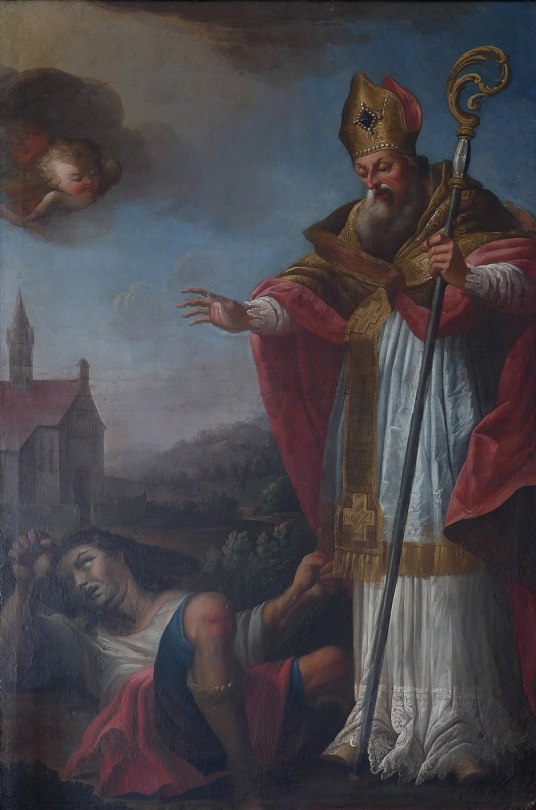
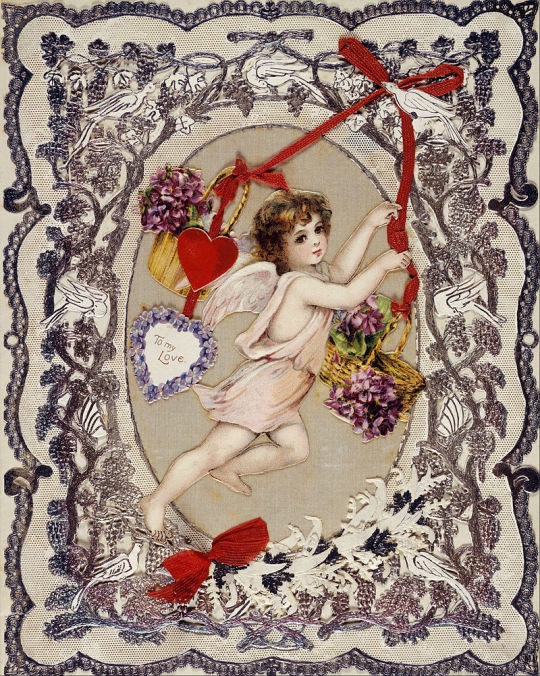
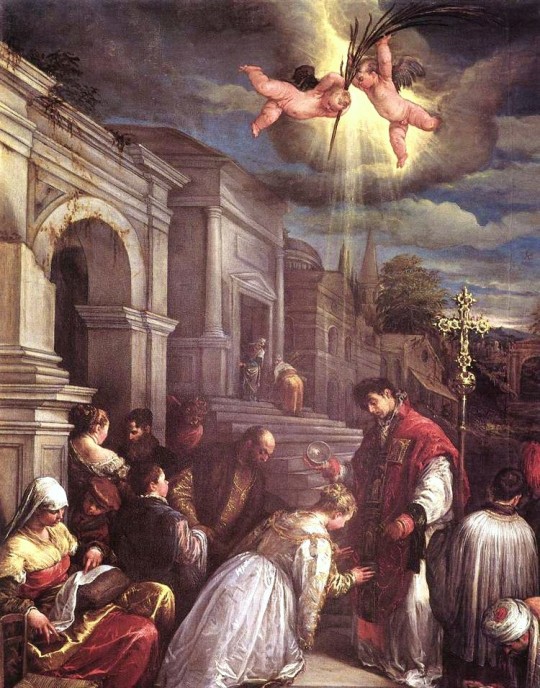
The ‘Real’ St. Valentine Was No Patron of Love
Valentine's Day originated as a feast to celebrate the decapitation of a third-century Christian martyr, or perhaps two. It took a gruesome path to becoming a romantic holiday.
The Conversation Lisa Bitel
On Feb. 14, sweethearts of all ages will exchange cards, flowers, candy, and more lavish gifts in the name of St. Valentine. But as a historian of Christianity, I can tell you that at the root of our modern holiday is a beautiful fiction. St. Valentine was no lover or patron of love.
Valentine’s Day, in fact, originated as a liturgical feast to celebrate the decapitation of a third-century Christian martyr, or perhaps two. So, how did we get from beheading to betrothing on Valentine’s Day?
Early Origins of St. Valentine
Ancient sources reveal that there were several St. Valentines who died on Feb. 14. Two of them were executed during the reign of Roman Emperor Claudius Gothicus in 269-270 A.D., at a time when persecution of Christians was common.
How do we know this? Because, an order of Belgian monks spent three centuries collecting evidence for the lives of saints from manuscript archives around the known world.
They were called Bollandists after Jean Bolland, a Jesuit scholar who began publishing the massive 68-folio volumes of “Acta Sanctorum,” or “Lives of the Saints,” beginning in 1643.
Since then, successive generations of monks continued the work until the last volume was published in 1940. The Brothers dug up every scrap of information about every saint on the liturgical calendar and printed the texts arranged according to the saint’s feast day.
The Valentine Martyrs
The volume encompassing Feb. 14 contains the stories of a handful of “Valentini,” including the earliest three of whom died in the third century.
The earliest Valentinus is said to have died in Africa, along with 24 soldiers. Unfortunately, even the Bollandists could not find any more information about him. As the monks knew, sometimes all that the saints left behind was a name and day of death.
We know only a little more about the other two Valentines.
According to a late medieval legend reprinted in the “Acta,” which was accompanied by Bollandist critique about its historical value, a Roman priest named Valentinus was arrested during the reign of Emperor Gothicus and put into the custody of an aristocrat named Asterius.
As the story goes, Asterius made the mistake of letting the preacher talk. Father Valentinus went on and on about Christ leading pagans out of the shadow of darkness and into the light of truth and salvation. Asterius made a bargain with Valentinus: If the Christian could cure Asterius’s foster-daughter of blindness, he would convert. Valentinus put his hands over the girl’s eyes and chanted:
“Lord Jesus Christ, en-lighten your handmaid, because you are God, the True Light.”
Easy as that. The child could see, according to the medieval legend. Asterius and his whole family were baptized. Unfortunately, when Emperor Gothicus heard the news, he ordered them all to be executed. But Valentinus was the only one to be beheaded. A pious widow, though, made off with his body and had it buried at the site of his martyrdom on the Via Flaminia, the ancient highway stretching from Rome to present-day Rimini. Later, a chapel was built over the saint’s remains.
St. Valentine Was Not a Romantic
The third third-century Valentinus was a bishop of Terni in the province of Umbria, Italy.
According to his equally dodgy legend, Terni’s bishop got into a situation like the other Valentinus by debating a potential convert and afterward healing his son. The rest of story is quite similar as well: He too, was beheaded on the orders of Emperor Gothicus and his body buried along the Via Flaminia.
It is likely, as the Bollandists suggested, that there weren’t actually two decapitated Valentines, but that two different versions of one saint’s legend appeared in both Rome and Terni.
Nonetheless, African, Roman or Umbrian, none of the Valentines seems to have been a romantic.
Indeed, medieval legends, repeated in modern media, had St. Valentine performing Christian marriage rituals or passing notes between Christian lovers jailed by Gothicus. Still other stories romantically involved him with the blind girl whom he allegedly healed. Yet none of these medieval tales had any basis in third-century history, as the Bollandists pointed out.
📷St. Valentine baptizing St. Lucilla. Credit: Jacopo Bassano (Jacopo da Ponte).
In any case, historical veracity did not count for much with medieval Christians. What they cared about were stories of miracles and martyrdoms, and the physical remains or relics of the saint. To be sure, many different churches and monasteries around medieval Europe claimed to have bits of a St. Valentinus’ skull in their treasuries.
Santa Maria in Cosmedin in Rome, for example, still displays a whole skull. According to the Bollandists, other churches across Europe also claim to own slivers and bits of one or the other St. Valentinus’ body: For example, San Anton Church in Madrid, Whitefriar Street Church in Dublin, the Church of Sts. Peter and Paul in Prague, Saint Mary’s Assumption in Chelmno, Poland, as well as churches in Malta, Birmingham, Glasgow, and on the Greek isle of Lesbos, among others.
For believers, relics of the martyrs signified the saints’ continuing their invisible presence among communities of pious Christians. In 11th-century Brittany, for instance, one bishop used what was purported to be Valentine’s head to halt fires, prevent epidemics, and cure all sorts of illnesses, including demonic possession.
As far as we know, though, the saint’s bones did nothing special for lovers.
Unlikely Pagan Origins
Many scholars have deconstructed Valentine and his day in books, articles and blog postings. Some suggest that the modern holiday is a Christian cover-up of the more ancient Roman celebration of Lupercalia in mid-February.
Lupercalia originated as a ritual in a rural masculine cult involving the sacrifice of goats and dogs and evolved later into an urban carnival. During the festivities half-naked young men ran through the streets of Rome, streaking people with thongs cut from the skins of newly killed goats. Pregnant women thought it brought them healthy babies. In 496 A.D., however, Pope Gelasius supposedly denounced the rowdy festival.
Still, there is no evidence that the pope purposely replaced Lupercalia with the more sedate cult of the martyred St. Valentine or any other Christian celebration.
Chaucer and the Love Birds
The love connection probably appeared more than a thousand years after the martyrs’ death, when Geoffrey Chaucer, author of “The Canterbury Tales” decreed the February feast of St. Valentinus to the mating of birds. He wrote in his “Parlement of Foules”:
“For this was on seynt Volantynys day. Whan euery bryd comyth there to chese his make.”
It seems that, in Chaucer’s day, English birds paired off to produce eggs in February. Soon, nature-minded European nobility began sending love notes during bird-mating season. For example, the French Duke of Orléans, who spent some years as a prisoner in the Tower of London, wrote to his wife in February 1415 that he was “already sick of love” (by which he meant lovesick.) And he called her his “very gentle Valentine.”
English audiences embraced the idea of February mating. Shakespeare’s lovestruck Ophelia spoke of herself as Hamlet’s Valentine.
In the following centuries, Englishmen and women began using Feb. 14 as an excuse to pen verses to their love objects. Industrialization made it easier with mass-produced illustrated cards adorned with smarmy poetry. Then along came Cadbury, Hershey’s, and other chocolate manufacturers marketing sweets for one’s sweetheart on Valentine’s Day.📷Valentine’s Day chocolates. Credit: GillianVann / Shutterstock.com.Today, shops everywhere in England and the U.S. decorate their windows with hearts and banners proclaiming the annual Day of Love. Merchants stock their shelves with candy, jewelry and Cupid-related trinkets begging “Be My Valentine.” For most lovers, this request does not require beheading.
Invisible Valentines
It seems that the erstwhile saint behind the holiday of love remains as elusive as love itself. Still, as St. Augustine, the great fifth-century theologian and philosopher argued in his treatise on “Faith in Invisible Things,” someone does not have to be standing before our eyes for us to love them.
And much like love itself, St. Valentine and his reputation as the patron saint of love are not matters of verifiable history, but of faith.
Lisa Bitel is Professor of History & Religion at the University of Southern California’s Dornsife College of Letters, Arts and Sciences.
https://getpocket.com/explore/item/the-real-st-valentine-was-no-patron-of-love?utm_source=pocket-newtab
0 notes
Text
Invia la tua candidatura lavorativa a Poste Italiane

Poste Italiane: MAXI ASSUNZIONI postini, sportellisti e impiegati, scadenza OTTOBRE. Nuove opportunità di lavoro per maxi assunzioni in Poste Italiane, è possibile infatti presentare la domanda come postini, sportellisti e altre posizioni. Le assunzioni per postini in tutta Italia Poste Italiane ha annunciato l’intenzione di assumere circa 10.000 nuove risorse in tutta Italia. Le prime opportunità sono legate a contratti a tempo determinato per il ruolo di Postino. Vediamo quali requisiti sono richiesti per diventare parte del team di Poste Italiane: Requisiti Richiesti: - Diploma di maturità o laurea, con un punteggio minimo di 70/100 per il diploma di scuola media superiore o 102/110 per la laurea, anche triennale. - Patente di guida valida. - Abilità alla guida del motomezzo aziendale (generalmente il motorino Piaggio liberty 125 cc). - Certificato medico di idoneità al lavoro generica, rilasciato dalla USL/ASL di appartenenza o dal medico curante, con indicazione del numero di registrazione del medico presso la propria USL/ASL. - Per la sola provincia di Bolzano, patentino del bilinguismo. - Non sono richieste conoscenze specifiche. Dove Saranno Effettuate le Assunzioni Ecco un elenco delle regioni e province italiane in cui sono disponibili opportunità di lavoro con Poste Italiane: -

Lombardia – Varese, Como, Sondrio, Milano, Bergamo, Brescia, Pavia, Cremona, Mantova, Lecco, Lodi, Monza e Brianza; - Veneto – Verona, Vicenza, Belluno, Treviso, Venezia, Padova, Rovigo; - Piemonte – Torino, Vercelli, Novara, Cuneo, Asti, Alessandria, Biella, Verbano Cusio Ossola; - Valle d’Aosta – Aosta; - Friuli Venezia Giulia – Udine, Gorizia, Trieste, Pordenone; - Trentino Alto Adige – Trento, Bolzano; - Umbria – Perugia, Terni; - Toscana – Massa Carrara, Lucca, Pistoia, Firenze, Livorno, Pisa, Arezzo, Siena, Grosseto, Prato; - Liguria – Imperia, Savona, Genova, La Spezia; - Emilia Romagna – Parma, Bologna, Ravenna, Forlì Cesena, Rimini, Piacenza, Reggio Emilia, Modena, Ferrara; - Marche – Pesaro e Urbino, Ancona, Macerata, Ascoli Piceno, Fermo; - Molise – Campobasso, Isernia; - Puglia – Foggia, Bari, Taranto, Brindisi, Lecce, Barletta Andria Trani; - Basilicata – Potenza, Matera; - Lazio – Viterbo, Rieti, Roma, Latina, Frosinone; - Abruzzo – L’Aquila, Teramo, Pescara, Chieti; - Sardegna – Sassari, Nuoro, Cagliari, Oristano, Olbia Tempio, Ogliastra, Medio Campidano, Carbonia Iglesias; - Sicilia – Trapani, Palermo, Messina, Agrigento, Caltanissetta, Enna, Catania, Ragusa, Siracusa; - Campania – Caserta, Benevento, Napoli, Avellino, Salerno; - Calabria – Cosenza, Catanzaro, Reggio di Calabria, Crotone, Vibo Valentia. I candidati possono selezionare una sola zona lavorativa per la candidatura. La scadenza per l’invio delle domande è il 13 ottobre 2023, ma è possibile inviare candidature spontanee anche successivamente. Le assunzioni per spotellisti Le candidature sono aperte fino al 31 dicembre 2023. Di seguito troverai tutte le informazioni utili su come candidarti. Poste Italiane ha avviato il processo di selezione di professionisti per il settore front end destinati a lavorare nella Provincia di Bolzano, in particolare nelle aree di Val Venosta, Val Pusteria, Valle Isarco, Val Gardena e Burgraviato. I candidati prescelti svolgeranno le loro mansioni negli uffici postali, dove si occuperanno di fornire assistenza alla clientela e avvieranno diverse attività di vendita di prodotti e servizi. REQUISITI Per partecipare alla selezione per il lavoro presso Poste Italiane a Bolzano, è necessario soddisfare i seguenti requisiti: - Diploma di scuola superiore. - Patentino di bilinguismo. Le assunzioni per impiegati Attualmente, Poste Italiane è alla ricerca di candidati per la posizione di addetti allo smistamento in Italia per l’anno 2023. Requisiti - Disponibilità a lavorare su turni notturni - Conoscenze professionali, non sono richieste conoscenze specialistiche. Luoghi di lavoro previsti: Ancona, Bologna, Firenze, Pisa, Napoli, Bari, Lamezia Terme, Padova, Verona, Venezia, Genova, Novara, Brescia, Milano Borromeo, Milano Roserio, Roma Via Affile, Fiumicino, Cagliari Le Regioni o le Province di assegnazione saranno definite in base alle necessità aziendali. Data di scadenza per la presentazione delle domande: 20 ottobre 2023.
Le candidature
Per ulteriori dettagli e per inviare il tuo curriculum vitae, visita il sito ufficiale di Poste Italiane nella sezione “lavora con noi“. Tieni presente che gli annunci potrebbero essere rimossi una volta raggiunto un numero prefissato di candidature, ma è sempre possibile inviare candidature spontanee. Read the full article
0 notes
Link
Sciopero di 24 ore a Busitalia, Umbria: fasce garantite nelle province di Perugia e Terni Il sindacato USB LAVORO PRIVATO ha proclamato uno sciopero di 24 ore per venerdì 7 luglio presso Busitalia, società del Polo Passeggeri del Gruppo FS ...
#CRONACA#SCIOPERODEITRASPORTI#SERVIZIPUBBLICI#TRASPORTOPUBBLICOLOCALE#USB#BUSITALIA#MOBILITÀ#SCIOPERO#TPL#TRASPORTI#TRASPORTOPUBBLICO
0 notes
Photo
Duomo di Orvieto, dettaglio di una colonna tortile
Italy, Umbria, Orvieto, Duomo, carved pillars
Le basilique cathédrale de Santa Maria Assunta est le principal lieu de culte catholique de Orvieto, dans province de Terni, église mère du diocèse d'Orvieto-Todi et chef-d'œuvre du'Architecture gothique Dell'Italie centrale. En janvier de 1889 Pape Léon XIII l'a élevé à la dignité de basilique mineure.[ 1 ] EST Monument national italien.
La construction de l'église a commencé à 1290 par volonté de Pape Nicolas IV dans le but de créer une seule grande cathédrale pour la ville afin de remplacer les deux églises qui existaient sur la place ( l'église épiscopale de S. Maria et l'église paroissiale de S. Costanzo ). Bien qu'il soit vrai que l'église détient le caporal du miracle de Bolsena, la théorie selon laquelle le miracle a été l'événement propitiatoire pour commencer sa construction est controversée. Conçu dans Style roman par un artiste inconnu ( probablement Échange Arnolfo), au début, la direction des travaux a été confiée à fra Bevignate de Pérouse qui a été succédé peu de temps avant la fin du siècle par Giovanni di Uguccione, qui a introduit les premières formes gothiques. Au début du XIVe siècle, le sculpteur et architecte siennois Lorenzo Maitani assumé le rôle de maître constructeur du travail.
***4
Duomo di Orvieto, dettaglio di una colonna tortile Italy, Umbria, Orvieto, Duomo, carved pillars
The Cathedral Basilica of Santa Maria Assunta is the principal place of Catholic worship in Orvieto, in the province of Terni, mother church of the Diocese of Orvieto-Todi and a masterpiece of Gothic architecture in central Italy. In January 1889 Pope Leo XIII elevated it to the dignity of minor basilica.[ 1 ] IS Italian National Monument.
The construction of the church began in 1290 by will of Pope Nicholas IV with the aim of creating a single large cathedral for the city to replace the two churches that existed in the square (the Episcopal Church of S. Maria and the parish church of S. Costanzo). While it is true that the church holds the Corporal of the Miracle of Bolsena, the theory that the miracle was the propitiatory event to begin its construction is controversial. Designed in Romanesque style by an unknown artist (probably Exchange Arnolfo), at first the direction of the works was entrusted to fra Bevignate of Perugia who was succeeded shortly before the end of the century by Giovanni di Uguccione, who introduced the early gothic forms. At the beginning of the 14th century, the Sienese sculptor and architect Lorenzo Maitani assumed the role of master builder of the work.

One of the highest achievements of Italian Gothic art and architecture is Orvieto Cathedral. Few buildings in the world are that ornate, and at the same time - few have such a well balanced and harmonious architecture.
16K notes
·
View notes
Link
Spese delle province italiane per GIORNALI e RIVISTE. Vince Terni, seconda classificata Matera.
4 notes
·
View notes
Photo

La Scarzuola, Umbria, Italy: La Scarzuola is an architectural complex in Umbria, located in Montegiove hamlet in the comune of Montegabbione, Terni Province, Italy. It was originally the site of a 13th-century convent associated with St. Francis of Assisi, but was partially abandoned in the 19th century. Wikipedia
77 notes
·
View notes
Text

Piazza della Rocca, Attigliano, Umbria.
46 notes
·
View notes
Text

Orvieto, Terni Province, Umbria Region, Italy
Gabriel Tovar
5 notes
·
View notes
Text



















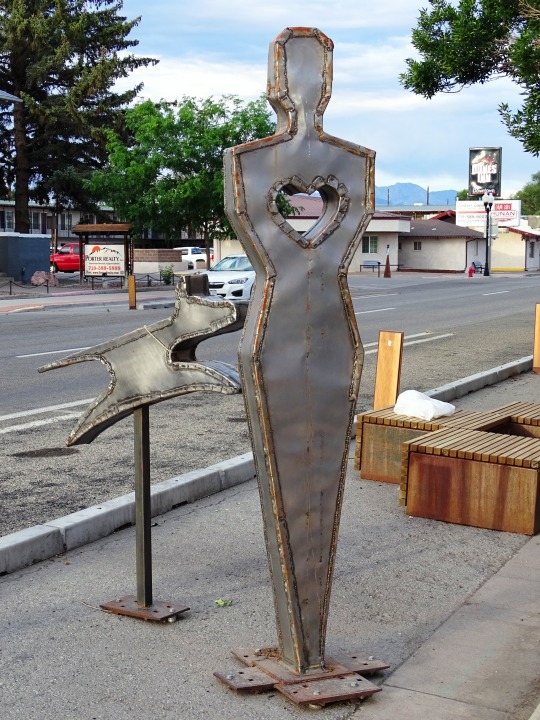








Valentine’s Day
Love and romance. Candy and flowers. Cards and gifts. Dinner and dancing.
Valentine’s Day comes along with a whole host of plans and accoutrements that are meant to all boil down to one thing: Love. And it all comes in the name of one man, St. Valentine, who was an interesting (and perhaps slightly misunderstood) character in history.
It’s time to learn about and celebrate Valentine’s Day!
History of Valentine’s Day
While some people believe that the history of this day is pretty clear, the reality is that the story behind St. Valentine’s Day is covered in a great deal of mystery. Tradition hails February 14 (and perhaps even the whole month of February!) as a time for love and romance, with both ancient Roman and Christian backgrounds.
But when the life of St. Valentine, the patron saint of this day, is considered, that’s when things tend to get a bit more murky. Some people don’t realize that the Catholic church actually has record of three of its own saints who went by the name of Valentine (or Valentinus) and all three died as martyrs.
Valentine’s Day Timeline
270 AD St. Valentine is martyred
Defying anti-marriage instructions given by Emperor Claudius II in order to build up the army, Valentine secretly supports and marries young couples which eventually leads to him being put to death. His death is said to have taken place on February 14.
496 AD First Valentine’s Day is recognized
Pope Gelasius decides to get rid of the Feast of Lupercalia, a pagan festival of love, and chooses to replace it with a celebration in honor of St. Valentine, who was martyred a couple hundred years prior.
1382 Chaucer’s Poem, Parlement of Foules, is written
This poem contains the first known literature reference connecting romantic love with Valentine’s Day. In the text of the poem, Chaucer writes of birds who would pair off with a mate, but some people refute the idea that it is connected to Valentine’s Day because February is too early and cold for birds to be mating.
1700 Americans begin exchanging Valentines
During this century, the inspiration for romance and love on Valentine’s Day turns into the specific gesture of exchanging notes, poems and love letters which may have been delivered by hand or by the US Postal Service.
2010 Valentine’s Day is released in theaters
This romantic comedy has a star-studded cast with big names like Julia Roberts, Bradley Cooper and even Kathy Bates, and tells the story of several different romances between couples that happen all in one day. However, at the box office, the film doesn’t really get the greatest reviews from critics.
Valentine Promotes Marriage
Perhaps the most commonly held tradition around St. Valentine is related to the year 270 AD when Claudius II was the emperor of Rome. Known as “Claudius the Cruel”, the emperor who wanted to build a strong army but was having trouble because of the attachment the men had to their wives and families. His solution? Just ban engagement and marriage, of course!
The story goes that Valentine, a priest in Rome, disagreed with the decree from Claudius and decided to go ahead and perform marriages anyway, allowing young lovers to marry each other in secret. When discovered, Claudius ordered the public beating and beheading of Valentine, which took place on February 14. The church later honored him by naming him as a saint.
This same Valentine is rumored to have become friends with the daughter of his jailer. He is said to have left her a note signed, “From Your Valentine”. This may explain the idea of asking someone “Will You Be My Valentine?”.
Less common are the other two saints also called Valentine, one who was a bishop in what is now Terni, Italy, and another who was martyred in a Roman province of Africa.
Feast of Lupercalia
It’s possible that even before Valentine, the priest, was martyred on February 14, the Feast of Lupercalia, a pagan feast of love, was celebrated around the same time. One tradition that went along with this festival is that the names of women were put into a box and drawn out by the men that they would be matched up with, letting chance (or fate!) take the lead.
By 496 AD, Pope Gelasius was tired of such pagan celebrations, so he declared that the Feast of Lupercalia would be canceled and, instead, St. Valentine’s Day would be celebrated on February 14. As time passed, this day became one where lovers would exchange poems, cards, notes and flowers, singing songs and performing other romantic gestures.
How to Celebrate Valentine’s Day
Celebrating Valentine’s Day comes with all sorts of inherited romantic traditions which can certainly be fun and bring lots of joy! But this is also a great way to get creative with showing people how much they are loved–even if it isn’t a romantic relationship.
Try out some of these ideas for celebrating Valentine’s Day:
Make a Card or Gift for Someone
Whether it’s a romantic partner or just a friend, Valentine’s Day is a great day to say “I Love You”. Hand made cards and gifts are especially welcome when it comes to showing someone how much they are cared for. January is a dark and quiet month anyway, so there’s plenty of time to prepare homemade gifts from a hobby like knitting a scarf, braiding a friendship bracelet, embroidering a towel, painting a picture or simply making a card.
Send Roses for Valentine’s Day
With delivery services abounding in almost every town, getting flowers delivered has never been easier! Choose to send red roses that stand for passion; yellow for friendship; pink for sweetness; peach for sincerity or gratefulness; white for purity or loyalty; ivory for perfection; and lavender for a crush (or love at first sight!).
Make Dinner Reservations
It’s likely that a last minute idea for going out to dinner will result in ordering takeout to eat at home, because restaurants are basically always full on Valentine’s Day. But, think ahead (sometimes months ahead, depending on the popularity of the restaurant) and make a reservation for two at a romantic place.
Enjoy a Story About Love
Head over to a local bookstore or library and browse the selection of novels or biographies that might feature stories about love. Or, it might even be interesting to read a biography about the guys named Valentine!
Those who don’t have as much time to read could put on their favorite drama or rom-com movie and see what hijinx the main characters get into. Try out some of these films about love to get started:
Valentine’s Day (2010). Okay, maybe this one is obvious. And perhaps it’s not even a great film, but it would be remiss to leave out this one with an all-star cast including Julia Roberts, Bradley Cooper, Jennifer Garner and Ashton Kutcher.
The Notebook (2004). This quintessential romance by Nicholas Sparks can be read as a novel or watched in the film starring Ryan Gosling and Rachel McAdams.
Pride and Prejudice (2005). This delightful take on the Jane Austen’s novel of the same name stars Keira Knightly, Rosamund Pike and Matthew Macfayden.
Think Like a Man (2012). Based on Steve Harvey’s book Act Like a Lady, Think Like a Man, this rom-com features Michael Ealy, Regina Hall, Kevin Hart and Meagan Good.
Get Creative for Valentine’s Day
This day doesn’t have to be the same as it’s always been. In fact, it’s a great day to try something new. Go on a mountain hike, visit a museum together, go whitewater rafting or learn how to play chess. Whatever would be fun and can be done in the spirit of love is the perfect activity for this day!
Valentine’s Day FAQs
When is Valentine’s Day?
Valentine’s Day takes place every year on February 14. It started on this day in AD 496 when the pope established the holiday in Rome in honor of the martyred Saint Valentine, who was killed on February 14.
What to do on Valentine’s Day?
This day can be filled with opportunities to show people how much they are loved. Exchange cards, send someone flowers, make breakfast for family members or write a poem.
When was the first Valentine’s Day?
Valentine’s Day is not actually a modern holiday, but has been celebrated in the middle of the month of February for more than 1500 years. The first Valentine’s Day was established by Pope Gelasius.
Is Valentine’s Day a global holiday?
Yes! Valentine’s Day is celebrated in various capacities in countries all over the world. From sharing a bottle of wine to giving gifts, from school children in America exchanging Valentines cards to people in Wales exchanging carved wooden spoons, this day is one that shows how people simply love the idea of love.
Who was Saint Valentine?
There is a bit of overlap in the stories as it seems there were at least three martyred saints with the name Valentine. However, the one most notably celebrated was a priest in Rome who defied the emperor’s anti-love commands and married young couples anyway.
Source
#Heartfullness Vegas by Katy Boynton#Las Vegas#Flowerwall by Susana Barros#Paradise#Lisbon#Discriminação Racial by Carlos De Oliveira Correia#Portugal#Albufeira#original photography#Take Heart by Patricia Vader#Napa#New York City#14 February#public art#Eduardo Kobra’s V-J Day in Times Square by Alfred Eisenstaed Mural#Unconditional Surrender by Seward Johnson#Valentine’s Day#ValentinesDay#Canada#Distillery District#Toronto#Vancouver#Sprüngli Pralines#chocolate
0 notes
Photo







San Gemini Residence, province of Terni, Umbria, Italy,
Carlo Berarducci Architecture
#art#design#architecture#concept#render#italy#san gemini#umbria#luxuryhouses#luxuryhomes#luxurylifestyle#waterfall#carlo berarducci#countryhouse#retreat
155 notes
·
View notes
Text
Italian car plates
How to recognize from where a car is? Maybe you've wondered this when you were walking around in Italy, or maybe not. Still, you can check from which area a car is, especially if you happen to see an old car (but even in some of the newest ones).
For example: AO = Aosta (yeah not someone yelling at you or hurting themselves) FI = Firenze (the farfallino alphabet? Another day) They're not all as easy as these, with the first two letters of the province's name: BZ = Bolzano (as the bee bzzz around you but stopping immediately) BS = Brescia (yeah nope, it's not the bs you were thinking about - how funny I am today... sorry) KR = Crotone (my all time fave cause of the K out of nowhere)
But it is cool cause at times not even Italians do remember the actual province for each letters' combination, cause it could be more than one. So we used to go on like this (either a monologue or a chat): "TR? Trapani? No Trapani should be TP...and Trento is TN right?... so...??? Terni!! TR is Terni" There are more of these in the link at the very bottom of this post, in case you're curious.
It was fun cause when I was little there was a game I used to make on long trips: put together the letters of the cars passing by and forming names or saying random stuff.
some of the most common were TO, MI, NO ..this combination could become TOMINO, a cheese name MINO, a name MITO (I was ahead of my time, seen the actual MI-TO connection) If a VA was passing by as well maybe followed by a NO, I had VANO = space or useless
You got the point ig. I'll stop here with the "weirdo Italian" part.
You can read the more serious history part under the keep reading link (cause plates have a very long and confused story) plus a fun note at the very bottom:
We started putting plates on the first cars (velocipedes too, actually) in the last years of 1800. It was applied on the car's side and it had the owner's name and the license number.
Few years after, in 1901, the plate had to be created by the owner and contain the extended Provincia's name (Genova, Milano, Napoli...) and the license number (e.g.: Torino 427 - which is one of the still existing plates). There are only a few plates from that age nowadays, and they're all exposed in different Italian Museums (two can be seen at the Museo dell'Automobile di Torino, e.g.).
Back then, nobody thought cars would have become so many. In 1905 it was decided to change plates once again: instead of the name of the province, there was a corresponding number in red, accompanied by a dash and another number in black, which represented the registration number of the car. (e.g. 55 - 101 was a car from Roma's area. Roma province's number was number 55 bc, in alphabetical order, Roma was the 55th province we had, until WWI).
In 1927, Mussolini changed the provinces' laws and even car plates' design. Each plate had to have two letters from the name of the capoluogo di provincia (most important city of the district), generally the first letter and then another one from the name* (exception made for Roma, which had the entire name, with the capital R as big as the digits), and then a progressive number from 1 to 999999 (after hitting which, we started useing letters). Plates started looking differently, being written in white on a black bg on the same line; then, as digits grew in number, we had two lines (square format) with the province's letters at the top and the 4 digits at the bottom (for 5 digits numbers, the first digit was put at the top after a dot near the province's letters).

(To see some more examples, check wikipedia)
Even colonies had to follow a similar pattern when putting plates on their cars.
After the end of WWII we see some changes: the emblem of the Italian Republic or of each "Regione Autonoma" was put on the plate as well. Trieste had a different approach because it wasn't part of Italy until 1954. Then we had some changes like the measures of the plate, a different way to write the characters on the front plate... From the 60s, we started producing plates that had 6 digits: for plates that didn't had 6 numbers, some 0s were put at the beginning (e.g. 4598 -> 004598). Between the 70s and the 80s, the provincia's letters (or name, for Roma), start to be colored in orange in the back's plate.

From the 1985 plates are again in metal (for a while we produced them in plastic, but plastic was easily ruined). Characters are written in black on a white reflecting bg. The front's plate almost becomes as big as the back plate, and has the same format: province's letters followed by digits (before, it was different, see pic above). We start seeing some letters also among digits.
From 1994 to 1999 we have the format made of a combination of letters and numbers: two letters at the beginning and at the end and three digits in the middle. There are combinations that are avoided in order to not create confusion (no letters I, O, Q and U also to avoid confusion with digits; no CC or CD or EE because these were used for Consular Corps, Diplomatics Corps and Foreign Excursionists). Combinations starting with ZA were only used in squared plates (genrally seen on off-roads vehicles).

New province created in 1992 (Biella, Verbano-Cusio-Ossola, Lodi, Lecco, Crotone, Vibo Valentia, Rimini and Prato) had still the chance to use the old format with the province's letters followed by the 6 digits for a bunch of cars (around 12000).
Not seeing the provincia's letters wasn't okay for many Italians so in 1999 we changed the format of the plate to the one with blue bands on the sides: National letter and European symbol on the left, and provincia's letters (that can be removed as they're stickers basically and honestly some Italians did removed them cause yeah, it's not always safe to visit a district for someone--- I will explain later on in another post) and the immatricolation's year on the right. This is the EU format. For the squared plates, we have the letters on the top, with the blue bands on its side, and digits at the bottom.


To be clear: numbers depends on the province's registration of the car (and letters belong on that same provincia). I mean you can live in a provincia but the car you are going to buy is registered in another, and that's fine (unless, as Imentioned, there are old feuds among the two... but it is no more so? Ig).
*Here you have the Province's corresponding digits (as at the beginning of 1900) and the Province's letters. Fun thing: Cuneo was supposed to be CU but "CU" in Piedmontese (and Lombard too) means "butt", so it was immediately changed to CN.
#it#italian#italiano#langblr#italian langblr#italian things#iitalians tuff#italian culture#italian cars#italians#italian kids games#cars#italianblr#italian language#languageblr#languages#curiosity#curiosities#italian stuff
36 notes
·
View notes